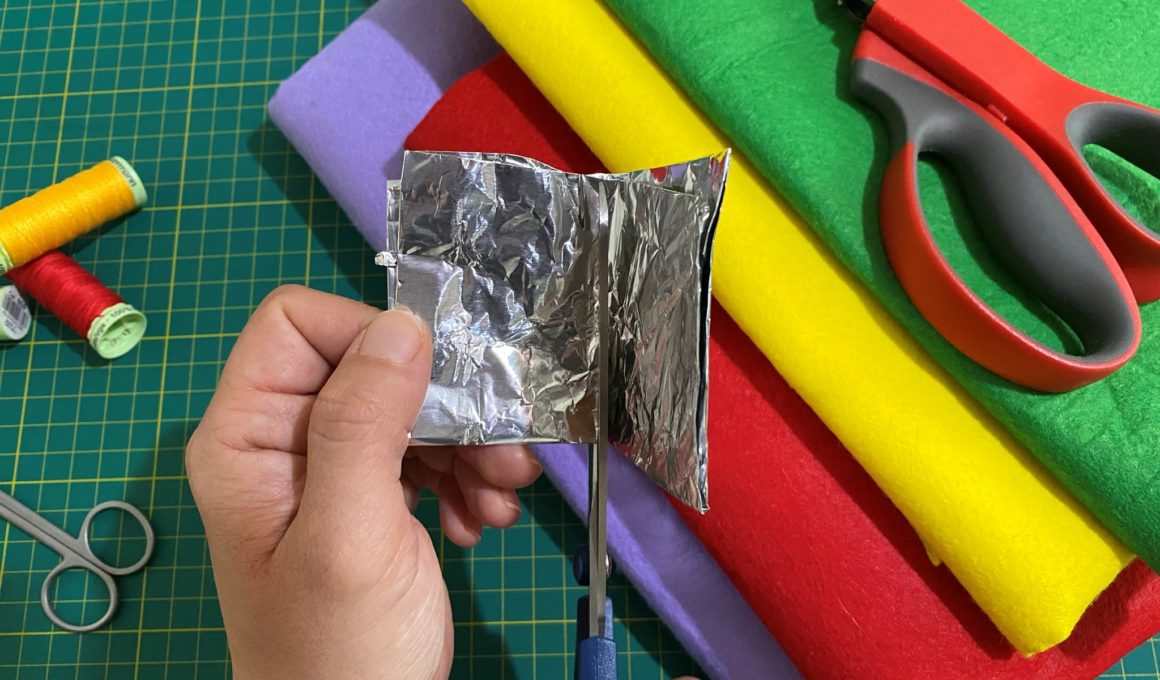Table of Contents
Sharpening your kitchen knives is probably second nature, but when was the last time you sharpened your scissors? Almost certainly never. Unfortunately, sharp scissors cut fast and cleanly. Moreover, returning sharp clippers to razor-sharp is no more difficult than sharpening knives.
Sharpeners specifically developed for sharpening scissors are now available. Still, there are four more ways to sharpen scissors using tools and supplies you presumably already own.
See Also: 3 Tips to Make Your Pieces Beautiful When Cutting Felt
I often say that the perfect finish starts with the cut for felt craft projects. And to have a smooth cut and no spikes, you need to know how to sharpen your scissors.
But you don’t need to find a professional or have specific equipment for this. You can also sharpen your scissors with the help of materials you already have at home.
See Also: How to Draw and Cut Felt – Tips for Felt Crafts Beginners
Today I will teach you 3 simple and effective ways to save a sharp clipper. You will be amazed at the ease of this process. Take a look!
Sharpening scissors with a glass bottle
Using a glass bottle to sharpen scissors sounds weird. But all you need to sharpen your scissors is a glass or glass bottle.
However, this will damage the glass, so choose a glass that can be discarded and not used later.
How to sharpen scissors with a glass bottle:
- Attach the scissors around the bottle and make repeated cutting movements.
- Gently press the glass to sharpen the blade but do not break with excessive force.
- While sharpening the scissors, test it on a felt until you are satisfied with the result.
Sharpening scissors with sandpaper
The technique of sharpening scissors with sandpaper is straightforward and fast. All you need is a wall or wood sandpaper.
How to sharpen scissors with sandpaper:
- First, fold your sandpaper in half, leaving the rough side facing out.
- Next, use blunt scissors to cut the sandpaper into thin strips several times.
- When cutting, be sure to use the entire length of the blade, not just the tip.
- Finally, test the result on a piece of felt and repeat the process until you reach your goal.
Scissors sharpening with foil
Aluminum foil is perfect for sharpening scissors and pliers. You can also use a steel sponge. Essentially, this technique is similar to cutting sandpaper, except that you only use aluminum foil instead of sandpaper.
This method sharpens scissors; however, it will not sharpen scissors that are highly dull or have damaged blades. Begin by cutting off a 12-inch-long piece of foil. Then fold the foil several times until it is at least six times thick. Then use scissors to cut the foil pack into 10 or 12 strips using whole stroke cuts.
How to sharpen scissors with aluminum foil:
- Fold the aluminum foil several times and cut thin strips until you are satisfied.
- If you will use the steel sponge, cut it precisely several times and test it on a cloth cover.
3 tips to keep your scissors sharp
Scissors quickly dull. Professionally sharpening them might be pretty costly. So instead of going out for a sharpening session or buying a new pair of scissors, learning how to sharpen scissors on your own can save you both time and money.
- You should already know that the scissors used to cut the felt should not be used for more material. Papers, fabrics, and blankets will damage the blade of your scissors, and you will need to sharpen them more often.
- Avoid leaving your scissors out of contact with other materials, especially needles and pins. You can make a felt cover for your scissors or store your scissors separately.
- Maintain your scissors regularly. Clean it whenever you use it, remove the felt lint, lubricate it with the appropriate oil, and use a screwdriver to adjust the pivot screw if necessary.
How Often Should You Sharpen Your Scissors?
There is no standard timeline when it comes to job sharpening. It depends on how often you use your scissors and what you’re cutting. Someone who often cuts solid materials will likely need to sharpen their scissors more often than someone who only cuts things like grass.
Check the parts you cut in your felting work. If pieces have a lot of fuzz or curved cut points, it’s time to sharpen your scissors.
Another good way to test your scissors is to use a paper test. If the scissors can’t cut the paper cleanly, you need to sharpen it. When trying your scissors, start from the maximum opening of the scissors until they are entirely closed. Sharp scissors should make a clean cut all over the blade.
You will find that keeping your scissors sharp will make a massive difference in the final results of your felt pieces.
And now that you know how to sharpen scissors in three different ways, you have no excuse to keep suffering from evil scissors, right?
Did you know these techniques for sharpening your scissors? Tell me here in the comments!













Pretty! This has been an incredibly wonderful article. It is wiser to renew the old one rather than replace the dull shears and buy a new one.
Thanks for providing these details.